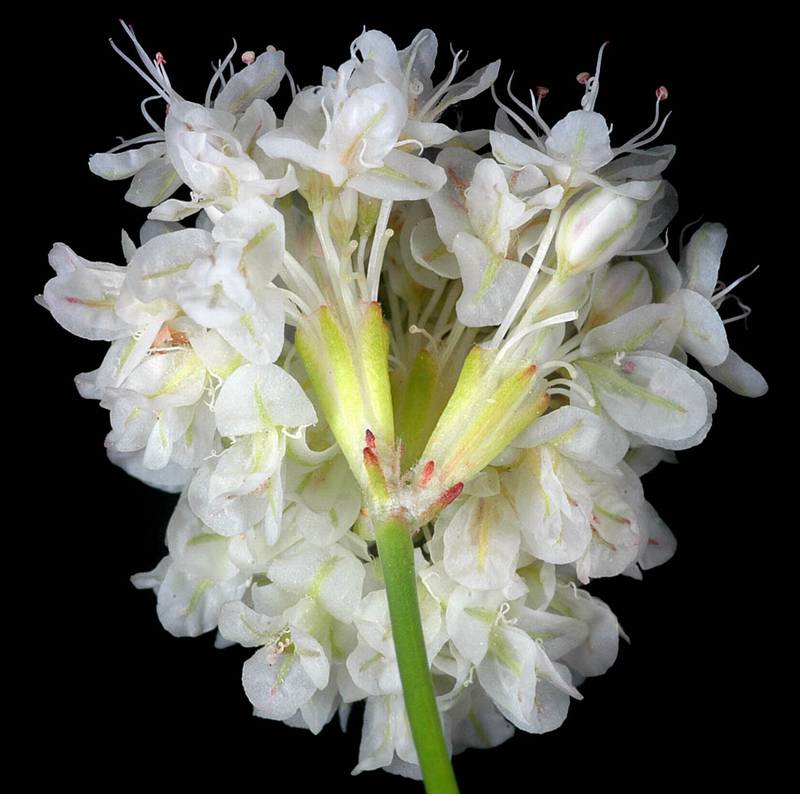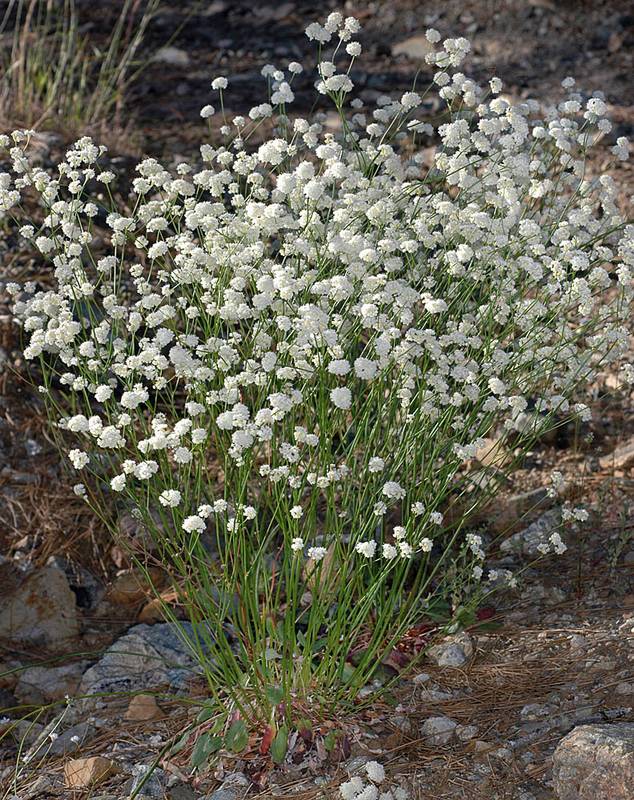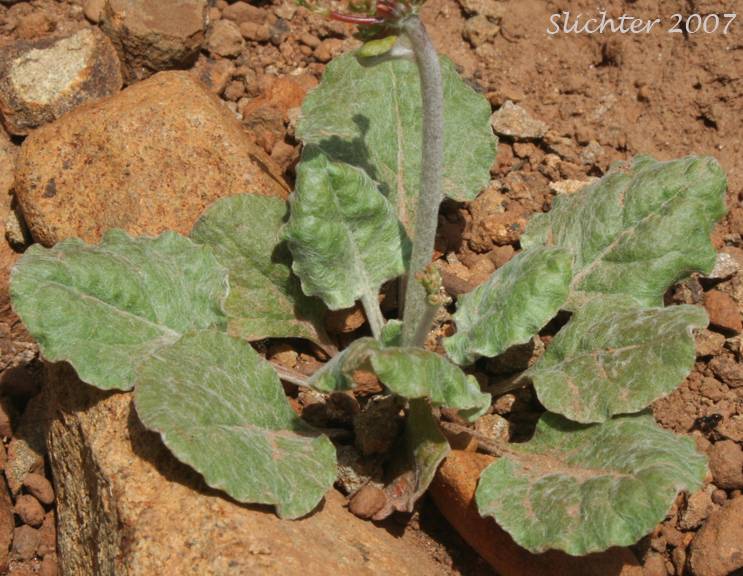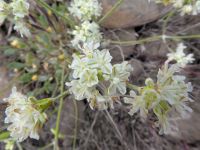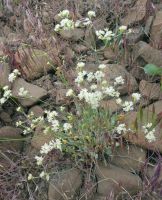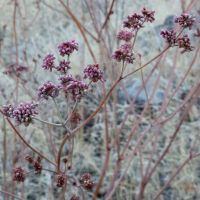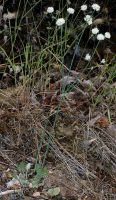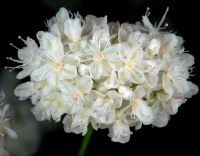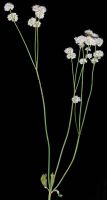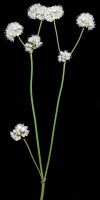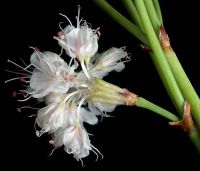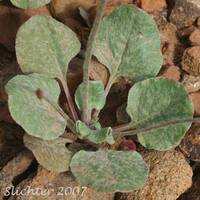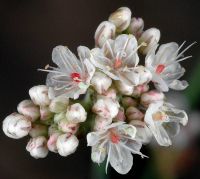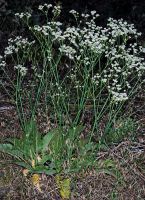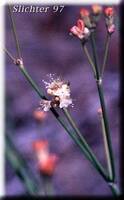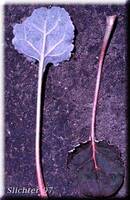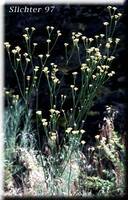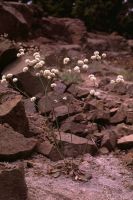Distribution: Occurring on both sides of the Cascades crest in southern Washington; southern Washington to California and Nevada.
Habitat: Sandy or rocky places from the lowlands to subalpine.
Flowers: June-August
Origin: Native
Growth Duration: Perennial
Conservation Status: Not of concern
Pollination: Bumblebees, bees, flies, butterflies, beetles, wasps
Perennial with a few sparingly-branched, green, leafless stems to 5 dm. tall.
All basal, the blades oblong to oval, dense gray-woolly beneath and green above with some soft, fine hairs, narrowed abruptly to a slender petiole 2-4 times as long as the blade.
Open, branched inflorescence with leafy bracts at the first and second points of branching; involucres usually in capitate clusters, tubular, with 5 erect, short teeth; flowers interspersed with numerous, filiform bracts that protrude form the involucres. Tepals white to pinkish or yellowish, 3-4 mm. long, divided nearly to the base into oblong segments.
Separate from E. elatum by the leaves and flower clusters. E. elatum has large leaves somewhat triangular in shape and green on both surfaces, and it has only a few flowers in each cluster.
Publication: Trans. Linn. Soc. London. 17: 413. 1836.
-
var. nudum – barestem buckwheat, naked buckwheat
 Occurring on both sides of the Cascades crest in southern Washington; southern Washington to California and Nevada.
Occurring on both sides of the Cascades crest in southern Washington; southern Washington to California and Nevada.
PNW Herbaria: Specimen records of Eriogonum nudum in the Consortium of Pacific Northwest Herbaria database
WA Flora Checklist: Eriogonum nudum checklist entry
OregonFlora: Eriogonum nudum information
E-Flora BC: Eriogonum nudum atlas page
CalPhotos: Eriogonum nudum photos

